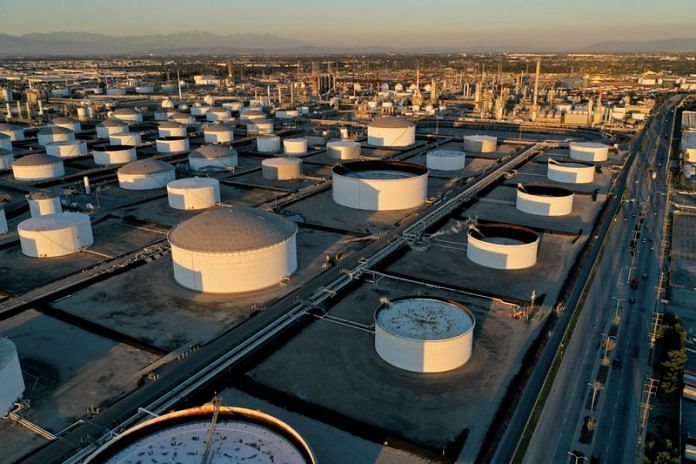By Georgina McCartney
HOUSTON (Reuters) – Oil settled more than 1% higher on Tuesday due to escalating tensions in Europe and the Middle East as wars in both regions continue to pose a threat to global supply.
Brent crude futures settled up $1.08, or 1.3%, at $85.33 per barrel, while U.S. West Texas Intermediate crude futures ended $1.24, or 1.5%, higher at $81.57 a barrel.
The global benchmark Brent has clambered back from an early-June close of $77.52, though remains off its $90 peaks from mid-April.
Prices rose after a Ukrainian drone strike caused a large fire in a fuel tank at an oil terminal in Russia’s southern port of Azov, according to Russian officials and a Ukrainian intelligence source.
The port of Azov has two oil product terminals, which handled a total of about 220,000 tons of fuel for export during the period from January to May.
The ongoing attacks on Russia’s oil refining complex pose a threat to physical global supply, as well as boosting the risk premium priced into crude futures.
“The Ukrainian attack reminds the market that Russian energy infrastructure is very much in the crosshairs, the global market needs those barrels of crude and refined products to keep prices in check,” said John Kilduff, partner at Again Capital.
Meanwhile, Israeli Foreign Minister Israel Katz warned that a decision on an all-out war with Hezbollah was coming soon even as the U.S. tries to avert a greater war between Israel and Lebanon’s Hezbollah movement.
Special envoy Amos Hochstein to U.S. President Joe Biden, said he had been dispatched to Lebanon immediately following a brief trip to Israel because the situation was “serious.”
“Everywhere you look the geopolitical risk factor is very high,” Price Futures Group’s Phil Flynn said.
“We have not seen a major impact on supply but that could change really quickly,” he added.
Prices also climbed on comments from New York Federal Reserve President John Williams, who said interest rates will come down gradually over time, though declined to say when the U.S. central bank will kick off its monetary policy easing.
However, later on Tuesday, Boston Federal Reserve President Susan Collins cautioned against getting carried away with recent inflation data, keeping investors on their toes and putting a ceiling on oil prices.
“It is too soon to determine whether inflation is durably on a path back to the 2% target,” Collins said.
Meanwhile, the market is also watching U.S. stockpile data due this week as a key indicator as to whether oil demand is increasing during the summer driving season.
U.S. crude inventories are expected to have fallen by 2.2 million barrels last week, according to analysts polled by Reuters.
The American Petroleum Institute will release its latest report on U.S. oil inventories at 4:30 p.m. EDT (2030 GMT), followed by government data at 11:00 a.m. EDT on Thursday, delayed a day due to the Juneteenth holiday. [EIA/S]
(Reporting by Georgina McCartney in Houston, Paul Carsten in London and Trixie Yap in Singapore; Editing by Marguerita Choy, Jason Neely and Tomasz Janowski)
Disclaimer: This report is auto generated from the Reuters news service. ThePrint holds no responsibilty for its content.



